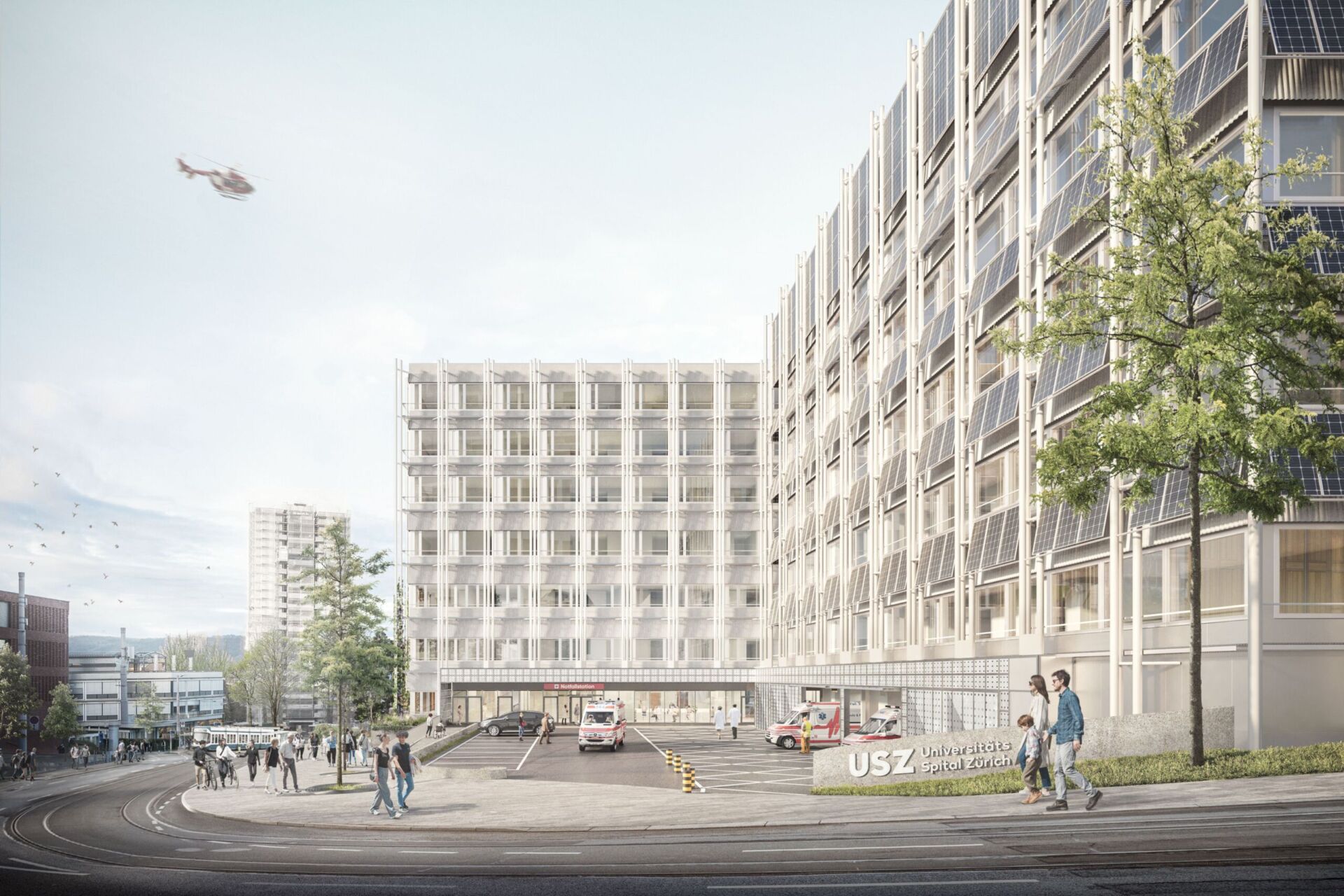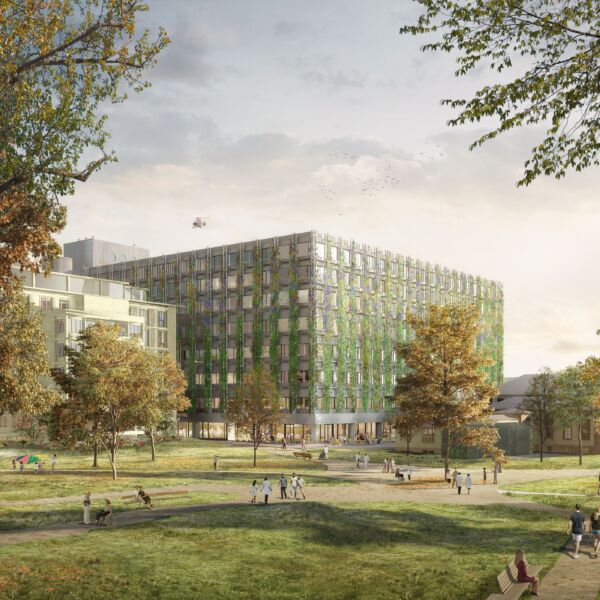Sustainability in construction
The USZ is currently constructing the two new buildings MITTE1|2. These will take the hospital a big step forward in terms of sustainability.

Die Fassaden liefern Solarstrom: Neubauten MITTE1|2. (Visualisierung: Nightnurse)
Recyclable materials
In the new MITTE1|2 buildings, we use recyclable materials such as wood and steel wherever possible and ensure that the materials used are free from harmful substances.
Flexible use
The new MITTE1|2 buildings are designed in such a way that they can adapt well to future developments in cutting-edge medicine. For example, the building will be constructed in such a way that most of the walls inside can be moved flexibly if the medical needs change. The ceilings can still support the medical technology devices of tomorrow, even if they become heavier.
Photovoltaics on the facades
The façades also contribute to ecological sustainability: Some of them are fitted with photovoltaic elements that convert sunlight into energy. Some of the façades and the roof of MITTE1 will also be planted with plants to help cool the increasingly warm urban climate in a natural way.
Rooms to feel good in
The new buildings will also increase the social sustainability of the USZ. For example, by making the rooms easily accessible for patients and visitors.
and meet high accessibility requirements. In order to operate the planned buildings efficiently, the USZ relies on short distances and easy orientation in the space.
Attractive meeting zones
The maintenance, servicing and cleaning specialists should be able to carry out their work in the new buildings as easily and efficiently as possible. To make people feel comfortable, the MITTE1|2 campus creates a wide range of quiet, recreational and meeting zones. Many areas are open to the public – for example a cafeteria, a restaurant and a pharmacy.
Certified with Gold Standard
The Swiss Society for Sustainable Real Estate (SGNI) has awarded the USZ new building project Campus MITTE1|2 with the pre-certificate “Gold Standard” for sustainable building according to “DGNB” (German Sustainable Building Council). This certifies that the new buildings meet comprehensive quality requirements in terms of sustainable construction and are in line with over 40 sustainability criteria(see Swiss DGNB system of the SGNI).
Opportunity for more sustainability
New buildings are a great opportunity to achieve greater sustainability. By the mid-2040s, the annual demand for electricity, heating and cooling on campus is expected to be 33 gigawatt hours. This corresponds to just a third of today’s energy requirements. The savings are equivalent to the annual energy consumption of around 3,000 single-family homes with four people.

